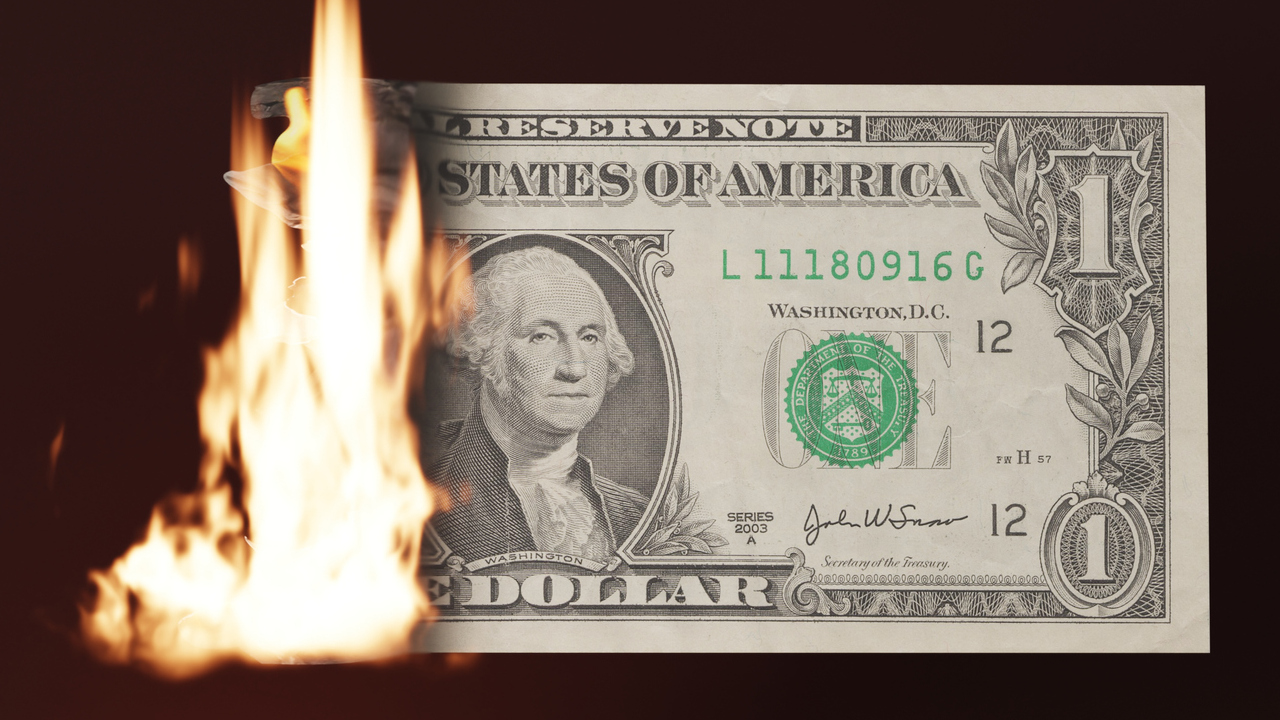The Biden administration and a consortium of public and private actors have been assiduously developing a novel U.S. central bank digital currency (CBDC), which would ultimately replace the tangible U.S. dollar and transform our financial system. A national CBDC administered, issued, and controlled by the U.S. Federal Reserve and other governmental authorities poses a threat to the liberty of every American citizen; worse, such a system is very close to fruition.
Based upon extensive research conducted through a joint venture between the Fed and MIT—coined Project Hamilton—Biden signed an executive order in early March directing nearly every department and agency within the executive branch to provide recommendations on widespread societal adoption of a CBDC within six months. Since then, a series of reports—including an official White House fact sheet—strongly suggest that CBDC research, testing, and development continue to be prioritized and pushed throughout the entire federal government.
Background / Cryptocurrencies Overview
Before delving into the ramifications that would stem from widespread adoption of a CBDC, it is vital to understand precisely what is being discussed. Many might think that the innocuous-sounding term “digital currency” is simply an extension of today’s mainstream internet-based payment systems, in which individuals use applications such as Zelle, PayPal, online banking transfer tools, credit cards, et cetera to gain access to digital dollars and digital debt.
While these are technically “digital” applications, they should not be confused with digital currencies. Moreover, it is important to distinguish the term “digital currency” from “cryptocurrency.” Though cryptocurrencies and CBDCs are both forms of digital currencies, in many ways they are diametric opposites.
Bitcoin, like most other cryptocurrencies, was developed with the express purpose of providing “a purely peer-to-peer version of electronic cash [that] would allow online payments to be sent directly from one party to another without going through a financial institution.”
To circumvent third parties like banks, cryptocurrencies such as Bitcoin rely upon revolutionary technologies such as cryptography and blockchain to secure and verify transactions within a public ledger, and control the issuance of new units. These technologies afford crypto users the ability to securely, anonymously, and efficiently complete transactions with one another independent of any centralized authority.
Essentially, cryptocurrency threatens to render certain aspects of financial institutions and central banks largely obsolete. As such, governments, global elites, and central bankers around the world have feverishly pursued an alternative that would allow them to maintain their grip upon the global financial system, by utilizing and manipulating the complex technologies that allow cryptocurrencies to function and thrive. Simultaneously, these elites have degraded crypto at every turn, denouncing its status as a legitimate form of currency due to its independence from regulatory oversight.
Central Bank Digital Currencies (CBDCs)
The U.S. government is not alone in pushing CBDCs, with nearly 100 countries having launched CBDC initiatives. Totalitarian countries such as China, which has one of the most advanced CBDC pilot programs in the world, have made the most progress. Yet, though China and other despotic regimes have clearly utilized CBDCs as mechanisms of totalitarian social control, “liberal democracies” such as the United States have decided to follow their autocratic counterparts into the abyss of economic autocracy.
While cryptocurrencies are primarily designed to be publicly available to any user and decentralized across a global blockchain network comprised of thousands of data hubs (known as nodes), CBDCs are designed to be private, and centralized within one single data hub administered and surveilled by a central bank.
Full adoption of a CBDC by the United States would have disastrous ramifications upon society, especially with recent innovations such as “smart contracts.” Smart contracts are basically programs, stored within the blockchain network, that complete transactions when certain pre-determined conditions are met.
Though smart contracts can be used to increase efficiency, trust, and security when used along public and decentralized blockchain networks, in the wrong hands this technology could be used for nefarious ends, just as with any other technology. For example, smart contracts would enable CBDC administrators to infinitely program each unit of currency to whatever specifications they determine.
Consequences for Individual Rights
In the United States, CBDC rollout would necessitate the creation of a government-issued “digital wallet,” tied to a unique digital ID, as stated by Fed Chairman Jerome Powell in March. With the government able to both manipulate the conditions of how individuals can spend their money, while tracking and recording every purchase (or attempted purchase) an individual makes, the opportunities for omniscient panoptic oversight are simply endless.
For instance, if you deposit your paycheck into a CBDC wallet, each unit of that pay could be programmed in certain ways so that you can only spend it on certain items, in certain amounts, with certain people, and at certain times. It could be used to restrict firearm purchases, impose a limit on gasoline purchases, or curb donations to certain political campaigns. A recent article from the American Conservative even suggests that “Americans’ ability to access their digital wallets could even be tied to something like vaccination status.” This is not a far-fetched scenario; the technology is there, and our government would probably not hesitate to use it.
CBDCs could even be used to conduct monetary policy, without consent of individual account holders. Former International Monetary Fund official Eswar Prasad bluntly assessed, “If we all had CBDC accounts instead of cash, in principle it might be possible to implement negative interest rates simply by shrinking balances in CBDC accounts. It will become a lot easier to undertake helicopter drops of money.” A Forbes article written in response remarks, “In other words, central banks will take money out of people’s accounts to conduct monetary policy.”
Central bankers have not been shy about the power that such a mechanism would afford. Bank of International Settlements General Manager Agustin Carstens has directly stated, “We don’t know who’s using a $100 bill today and we don’t know who’s using a $1,000 peso bill today. The key difference with the CBDC is the central bank will have absolute control on the rules and regulations that will determine the use of that expression of central bank liability, and also we will have the technology to enforce that…”
Ultimately, CBDCs are an enslavement mechanism. Any individual who values the ability to transact freely, and live without all-encompassing financial surveillance, has cause for immense concern.
Lightly edited from op-ed first published at RedState.
Jack McPherrin ([email protected]) is a managing editor of StoppingSocialism.com, research editor for The Heartland Institute, and a research fellow for Heartland's Socialism Research Center. He holds an MA in International Affairs from Loyola University-Chicago, and a dual BA in Economics and History from Boston College.






